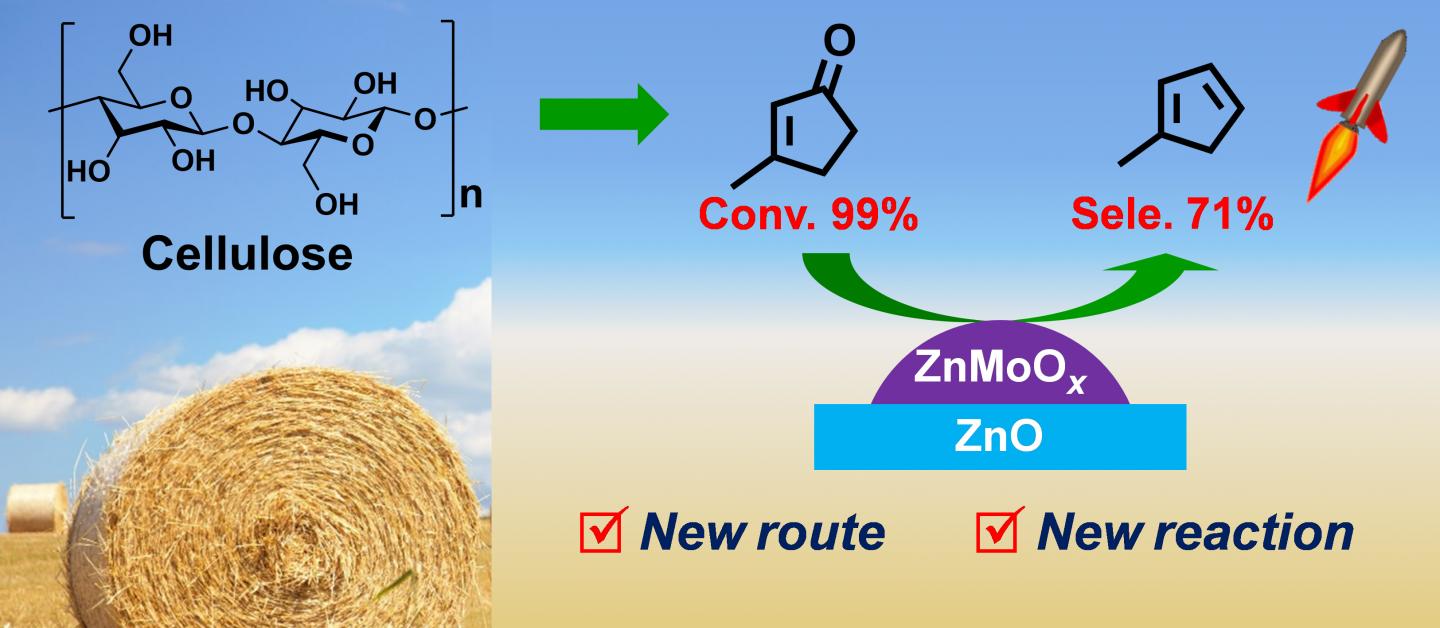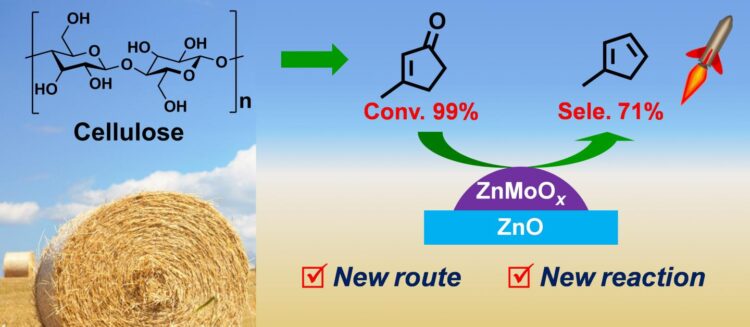
Credit: DICP
Methylcyclopentadiene (MCPD) is an important monomer in the production of RJ-4 fuel, a high-energy-density rocket fuel, and various valuable products.
Currently, MCPD is mainly obtained from the by-products of petroleum cracking tar at a very low yield of ~ 0.7 kg ton-1 and high price of ~10,000 USD ton-1. The exploration of highly efficient processes to convert renewable biomass to MCPD is stimulated by the energy and environment problems.
Recently, a group led by Prof. LI Ning and Prof. ZHANG Tao from the Dalian Institute of Chemical Physics (DICP) of the Chinese Academy of Sciences (CAS) synthesized bio-based MCPD via direct hydrodeoxygenation of 3-methylcyclopent-2-enone (MCP) derived from cellulose.
Their study was published in Nature Communications on Jan. 4.
The researchers found that selective hydrodeoxygenation of MCP to MCPD could be achieved on the partially reduced Zn-Mo oxide catalyst.
The Zn-Mo oxide catalyst formed ZnMoO3 species during the reduction of ZnMoO4, which might preferentially adsorb C=O bond in the presence of C=C bond in vapor phase hydrodeoxygenation of MCP led to highly selective formations of MCPD with a carbon yield of 70%.
“This is a following work of our previous report about the synthesis of 2,5-hexanedione by the direct hydrogenolysis of cellulose and the intramolecular aldol condensation of 2,5-hexanedione to MCP,” said Prof. Li.
This study opens up a horizon for the production of dienes with unsaturated ketone by a direct hydrodeoxygenation process.
###
Media Contact
Jean Wang
[email protected]
Original Source
https:/
Related Journal Article
http://dx.





